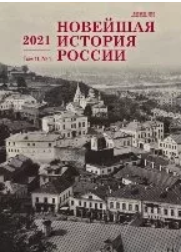Воинские захоронения периода Великой Отечественной войны на территории белорусско-латвийско-русского пограничья в советской практике увековечения памяти
Military Burials of the Great Patriotic War on the Territory of the Belarusian-Latvian-Russian Border in the Soviet Practice of Immortalization of Memory
Author(s): Alesya KorsakSubject(s): Military history, Studies in violence and power, Victimology, WW II and following years (1940 - 1949), Politics of History/Memory, Peace and Conflict Studies
Published by: Издательство Исторического факультета СПбГУ
Keywords: memory preservation; memorialization; Great Patriotic War; military burials; mass graves; military cemeteries;
Summary/Abstract: Using archival materials from the National Archive of the Republic of Belarus, the State Archive of Vitebsk region, the Polotsk Zonal State Archive, and the Daugavpils Zonal State Archive of the National Archive of Latvia, as well as published documents of Russian archives and works of historians, this article examines the process of preserving the memory of the fallen soldiers of the Red (Soviet) Army on the territory of the Belarusian-Latvian-Russian border in the post-war Soviet period. The main conclusion is the correctness (incorrectness) of decision making by Soviet authorities at the level of districts and cities in relation to immortalization of the memory of fallen soldiers of the Red (Soviet) Army and partisans. One example of the primary analysis of a common grave in the village of Shevelevo in the Palkinskiy district of the Pskov region. The comparative analysis of the policy of preserving the memory of those who died during the Great Patriotic War, by taking into account military burials and their further memorialization at the Belarusian-Latvian-Russian border in the post-war period, gives us the opportunity to ascertain the specifics of the Soviet republics in this direction. The actions of the Soviet leadership depended on the time of liberation of the territory from the Nazis, as well as the quality of work of the “funeral teams” that were to perform the function of burial of the bodies of the Red (Soviet) Army soldiers after the end of the battle.
Journal: Новейшая история России
- Issue Year: 11/2021
- Issue No: 34
- Page Range: 174-183
- Page Count: 10
- Language: Russian

